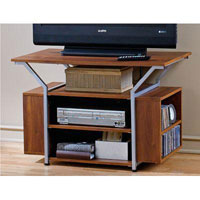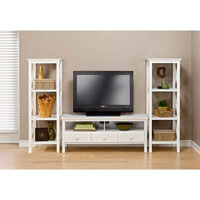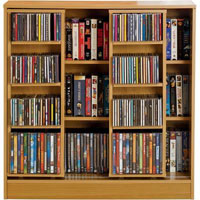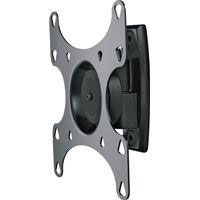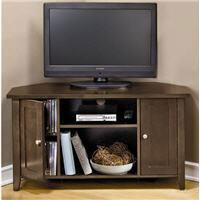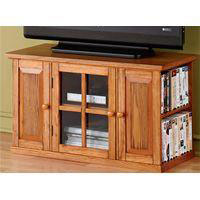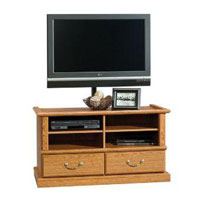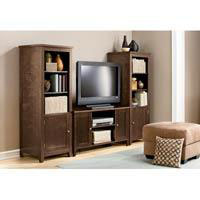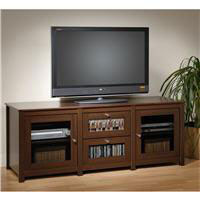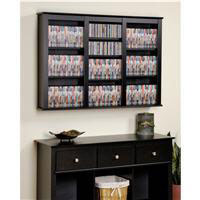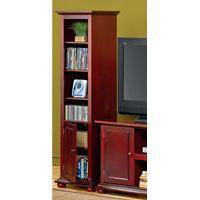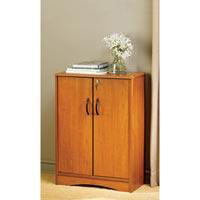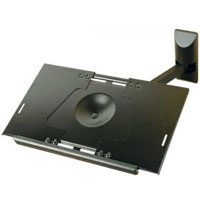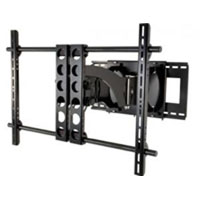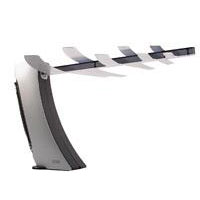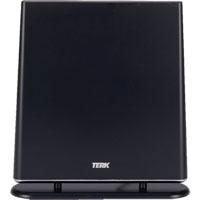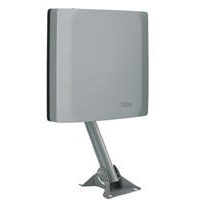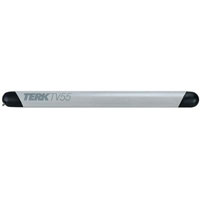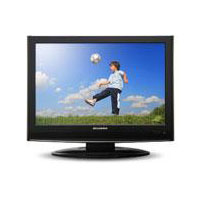PRODUCT GUIDES
Use these handy guides to help you buy the right product, the right way.
At Fingerhut, we want to make sure you’re totally satisfied with the products you purchase from us. That’s why we want to arm you with the best information possible while you’re shopping.
Some of the thousands of items we offer are a bit more specific or technical in nature, and that’s why we offer you these handy product buying guides, to help you make the right choice every time.
Just click on the category you’re shopping in, and see the information provided by our team of experts to help you make your purchase fit your specific needs.
With this helpful buying guide, it's easy to choose the perfect computer for your needs and budget. First, determine what type of computer you need.
The two types of personal computers we offer are portable and desktop. Portable computers (such as tablets/eReaders, notebooks and ultrabooks) are lightweight and small enough to take with you when you travel or visit the local coffee shop. Desktop computers, on the other hand, are larger and stationary. Typically, the price range for each type depends on screen size and power.
Tablet & eReader- Tablet computers and eReaders are ultra-portable devices that can easily be held in one hand; the most popular screen sizes are 7", 8" and 10.1"
- Touch screen for easy navigation
- Built-in Wi-Fi lets you wirelessly connect to the internet
- Includes built-in rechargeable battery and AC power cord
- Notebook computers have larger screen sizes than tablets/eReaders; the two most popular screen sizes are 15.6" and 17.3"
- Available with non-touch screen or touch screen
- Built-in Wi-Fi
- Most feature built-in DVD/CD player/burner
- Built-in keyboard and touchpad
- Includes built-in rechargeable battery and AC power cord
- Ultrabook computers are similar to notebooks but are thinner and lighter
- Available with non-touch screen or touch screen
- Built-in Wi-Fi
- Most feature built-in DVD/CD player
- Uses flash memory to store data
- Faster than traditional hard drives and uses less power
- Costs more than typical hard drive unit
- Built-in keyboard and touchpad
- Includes built-in rechargeable battery and AC power cord
- Tower-style desktop computers have a separate processing tower, monitor and other components
- Fixed system intended for home or office use
- Available with non-touch screen or touch screen monitor
- Runs on AC power
- All-in-one desktop computers combine the processor, monitor and other components into one convenient design
- Fixed system intended for stationary home or office use
- Available with non-touch screen or touch screen monitor
- Runs on AC power
These key specs will help you decide which computer is right for you.
Screen TypeMost computer users like larger screen sizes for easy viewing. A larger screen is great for watching movies and viewing multiple windows at once. For portable computers, consider how big of a computer you want to carry. Like an HDTV, computers are available with various screen resolutions. Popular options include HD (720p) resolution and Full HD (1080p) resolution; 1080p resolution is required for Full HD playback. You can also choose between touch screen and non-touch screen.
Operating SystemThe operating system (OS) is a software program that allows the computer hardware to communicate and operate with the computer software. In short, it manages the computer's memory, processor, software and hardware. Examples of three popular operating systems are Google Android, Microsoft Windows 8 and Apple Mac OS X.
Hard DriveMost of your files and data will be saved on the computer's hard drive. The hard drive determines how many files, movies and songs you can store on your computer. Typically, 500GB of storage is enough for most users. You can also purchase additional external storage or upgrade your internal drive at a later date. Solid state drives, which use flash memory instead of a spinning hard disk to store data, are faster than traditional hard drives and use less power. Typically, a computer with a solid state drive costs more than a computer with a hard drive.
System MemoryThe random access memory (RAM) of the computer determines the performance of multiple programs running at the same time. The more RAM your computer has, the more tasks it can perform at once. Simple operations such as watching a DVD movie or surfing the web do not require much memory, but extra power makes everything work faster. Most users will require a minimum of 4GB of RAM. An avid video game player may require 8GB or more system memory.
Processor Speed & PowerThe central processing unit (CPU) is the brains of the computer. The computer will process information faster based on its number of cores and speed, which is measured in gigahertz (GHz). Multi-core processors have multiple cores that each act like an individual processor. A GHz rating on a multi-core processor describes the speed of each individual core. Typically, dual-core processors provide enough power for most users. Video gamers will want a quad-core or higher processor.
Optical DriveThe optical drive is the computer's DVD and/or CD drive. Most portable and desktop computers are equipped with drives that play and burn DVDs and CDs. With streaming web media growing in popularity, optical drives are not as important today as they were in the past.
GraphicsComputers have integrated or discrete graphics cards. Discrete graphics provide extra graphics power for gaming and video tasks.
Internet ConnectivityTo use email, surf the web and share files or printers, your computer must be able to connect to a network or the internet. This connection is made through a modem, an Ethernet port or a wireless (Wi-Fi) connection.
Learn about ports you'll need on your computer and what each type does.
HDMIHDMI (high-definition multimedia interface) lets you conveniently play audio and video between your computer and TV or monitor.
USBAllows you to connect your computer to a keyboard, mouse and printer. Most notebook and desktop computers will have several USB ports. USB 3.0 offers a faster data transfer rate than USB 2.0.
Memory CardA memory card slot lets you easily store and transfer files and data.
Since ancient times magical powers have been associated with gemstones. Many people believed they possessed special powers to heal, tell the future and even insure the love of another. The following is a list of our most popular gemstones with a brief description, care guide and a bit of folklore about the gem.
| Agate |
|
| One of the first known gems in history, Agates are commonly used for the art of hardstone carving. Angular and curved stripes or bands of color make agates distinctive in the gem world. Often this stone is dyed for specific colors. | |
| Lore | Agates have long been believed to cure insomnia and unpleasant dreams. Ancient lore says agates encourage honest and improve memory and concentration. |
| Enhancements | Agates are commonly treated with heat or dyed to improve color. |
| Care & Cleaning | This stone should be cleaned only with warm soapy water. Avoid chemicals, heat and strong light to maintain the color of agates. |
| Amethyst |
|
 |
Amethyst is the traditional birthstone for February. It is a variety of quartz with purple coloration and comes in a range of shades, including deep purple, lilac, and mauve. The stone can also have bluish or reddish purple tinge when viewed from different angles.. |
| Lore | This stone was traditionally worn to guard against drunkenness and to instill a sober and serious mind. Greeks were known to drink wine from goblets carved from amethyst believing that it would prevent them from becoming drunk. It was also thought to bring the wearer happiness, beauty, good fortune, and love. |
| Enhancements | Most amethysts are treated with heat to permanently improve their color or to remove a "smoky" look. |
| Care & Cleaning | A fairly durable gem, you can clean this stone with a soft brush and warm soapy water, a jewelry cleaning solution, and/or a jewelry cleaning machine. |
| Aquamarine |
|
 |
Aquamarine is the traditional birthstone for March and is found in a range of blue and blue-green shades from pale to dark. When viewed from different angles, it can appear almost colorless. |
| Lore | This gem was thought to bring its wearers knowledge, foresight and inspiration. Rumored to prevent aging, aquamarines have been used to cure everything from hiccups to laziness. |
| Enhancements | Most aquamarines are heat-treated to intensify their blue hue. |
| Care & Cleaning | A fairly durable stone, aquamarine can be cleaned with a soft brush and warm soapy water, a jewelry cleaning solution, and/or a jewelry cleaning machine. Keep it away from harsh chemicals. |
| Black Onyx |
|
 |
Onyx is a variety of the chalcedony stone. Although it occurs naturally in black, it is generally dyed black to improve its color. It is also found in many other colors as well as white and brown. |
| Lore | The stone is believed to cool the yearnings and desires of love and increase happiness and intuition. |
| Enhancements | Onyx stones are always permanently dyed black. |
| Care & Cleaning | These stones are durable and can be cleaned with a soft brush and warm soapy water, a jewelry cleaning solution, and/or a jewelry cleaning machine. |
| Blue Topaz |
|
 |
Blue topaz is one of December's traditional birthstones, as is blue zircon. Topaz comes in many different colors including light blue, pink, yellow, red, and green. The most popular color is an enhanced blue. |
| Lore | This gorgeous gemstone was said to act as a protector and make the wearer invisible in emergencies, cure insanity and give the wearer fidelity and strength. |
| Enhancements | Nearly all blue topaz is treated with heat and is safely irradiated to permanently enrich its color. |
| Care & Cleaning | These stones are hard but not tough. Stones that are irradiated longer to achieve a darker blue color can become more brittle. Use caution against sharp blows when wearing these gems. You can safely clean this stone with a soft brush and warm soapy water or a jewelry cleaning solution. |
| Cat's
Eye |
|
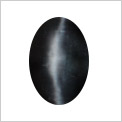 |
The grey to greenish-yellow quartz cat's eye has the same properties as the tiger's eye. Its main distinguishing characteristic is the chatoyancy, an optical phenomenon that creates a single glowing band of light across the surface of the gem. The word is coined from a French phrase that means "cat's eye." |
| Lore | This stone is said to bring good fortune and good luck. Many claim it brings serenity and happiness, along with optimism and generosity. Cat's eye can enhance creativity and kindness. Like the Tiger Eye, it is also a stone of protection. |
| Enhancements | These stones may be heated, dyed or bleached to enhance their color. |
| Care & Cleaning | A fairly durable gem, cats eye can be cleaned with a soft brush and warm soapy water, a jewelry cleaning solution and/or a jewelry cleaning machine. |
| Citrine |
|
 |
Citrine is the birthstone most often associated with birthdays in November. It comes in a range of colors from light yellow to dark amber tones. Yellow topaz is sometimes used and can be easily confused with the less expensive citrine. |
| Lore | In ancient times, citrine was thought of as a gift of the sun and believed to be a powerful antidote to a viper's venom. Citrines were believed to symbolize happiness as well as aid in digestion and remove toxins from the body. |
| Enhancements | Virtually all citrines are treated with heat to change their color permanently. |
| Care & Cleaning | A durable gemstone which can be cleaned with a soft brush and warm soapy water, a jewelry cleaning solution, and/or a jewelry cleaning machine. |
| Cubic Zirconia |
|
 |
Cubic Zirconia is a synthetic gemstone used to imitate diamonds. In 1976, the manufacturing process was perfected to create inexpensive quantities. Cubic zirconia as been the most popular imitation diamond that can be produced in a variety of colors. Cubic zirconias are typically flawless, as they're engineered in the lab rather than formed by nature. |
| History | Cubic Zirconia was discovered in its natural state in 1937 by two German mineralogists. It wasn't until the mid 1970's that Soviet scientists learned how to grow the crystals in the laboratory. |
| Enhancements | These stones may be heated, dyed or bleached to enhance their color. |
| Care & Cleaning | These stones need regular cleaning to maintain their sparkle. These stones are very durable and can be cleaned with warm soapy water, a jewelry cleaning solution and/or cleaning machine. |
| Diamond |
|
 |
While diamonds come in the many colors of the rainbow, even black, the colorless diamond is the traditional birthstone for April. White topaz and cubic zirconia are often used as the modern, less expensive birthstone. The diamond is the most brilliant of all the gemstones and the most desired, and has been a symbol of love since ancient Greek times. Made of pure carbon, diamonds are the hardest substance in the world and one of the earth's most common and oldest elements. |
| Lore | In ancient times, it was thought that diamonds were pieces of stars that had fallen to Earth and that anyone who wore them would possess superior strength and power. Diamonds were also thought to keep the flame of everlasting love. Many Egyptians thought the third finger of the left hand contained a vein that ran directly to one's heart, thus beginning the tradition of the wedding ring placed on this finger. Today, as in ancient times, the diamond symbolizes love and betrothal. |
| Enhancements | Fingerhut does not use any enhanced, laser-drilled, or fracture-filled diamonds in our jewelry selection. |
| Care & Cleaning | Even though diamonds are the hardest substance on earth, they can still be damaged if hit hard. Use a soft brush and warm water with a mild, sudsy ammonia solution to clean your diamond. A jewelry-cleaning machine with a special jewelry-cleaning solution may also be used. |
| Emerald |
|
 |
Emerald is the traditional birthstone for May. Emeralds come in shades of bright lime green to dark grass green but they are rarely flawless. This requires special care on the part of the owner. |
| Lore | Emeralds are known as the "queen of gems" and have been treasured since ancient times. According to legend, wearing an emerald soothes the eyes, cures a low I.Q., and even helps with infertility. Emeralds have long been regarded for their ability to protect the wearer from the perils of long journeys and to reveal true love. In some families, emerald jewelry is given to a mother following the birth of a son. |
| Enhancements | Most emeralds are enhanced with colorless oil. Occasionally, wax or resin may be used to improve the color. |
| Care & Cleaning | Emerald is a hard gem that resists surface wear, but it can easily chip if dropped or struck. Because of their delicate nature, emeralds require special care. Never expose them to harsh chemicals, jewelry cleaners, or heat. Never wear an emerald while bathing or showering. Gentle scrubbing with warm soapy water is the safest way to clean an emerald. Never use a jewelry cleaning machine or jewelry cleaner to clean your emerald. |
| Garnet |
|
 |
The dark and vibrant red Garnet is the traditional birthstone for January. Shades vary from a brown red to a raspberry red as seen in the rhodolite or almandine garnet. The most popular color is a beautiful, dark red. |
| Lore | At one time, garnets were believed to have great healing power, especially the red varieties. It was believed that the wearer of garnets was kept in good health and protected while traveling. Garnets are worn to signify truth and faith and are symbolic of love and devotion. |
| Enhancements | These stones are rarely ever treated. |
| Care & Cleaning | A fairly durable gem, garnets can be cleaned with a soft brush and warm soapy water, a jewelry cleaning solution, and/or a jewelry cleaning machine. |
| Jade |
|
 |
Jade comes in a variety of colors, including shades of green, purple, lavender, red, and rose. Jade has a long history in China, where it is still revered and holds cultural significance. |
| Lore | In some cultures, jade has been used as a cure for kidney ailments. The royal stone of ancient China, this opaque gem was said to represent love and virtue and bring good luck. Early texts reveal that the symbol for the king was a string of jade beads. To this day, jade beads still signify high rank and authority. |
| Enhancements | Jade is usually dyed, heated, or impregnated with wax to improve color and appearance. |
| Care & Cleaning | These stones are durable and can be cleaned with a soft brush and warm soapy water, a jewelry cleaning solution, and/or a jewelry cleaning machine. |
| Marcasite |
|
| A shiny metallic stone, Marcasite is actually iron pyrite. Because of its reflective properties, this stone is typically faceted and used as an accent stone. Commonly found in silver jewelry, marcasite was popular during the Victorian age. | |
| Lore | Marcasite is believed to increase physical stamina and stimulate your intellect. It is also said marcasite removes negative energy and can be possible shield stones. |
| Care & Cleaning | Often secured in settings with jeweler's cement, marcasite requires special cleaning. Wipe gently with a damp clean cloth, and do not soak in water or expose to chemicals. |
| Moissanite |
|
 |
Moissanite is a lab-created gemstone developed by Charles & Colvard. This stunning, nearly colorless gem has more brilliance and fire than diamonds and cubic zirconias, and will never fade, cloud, or change color. All moissanite comes with a certificate of authenticity and a limited lifetime warranty. |
| Enhancements | Each moissanite jewel is grown in a laboratory from a moissanite seed crystal. The only jewel harder than moissanite is a diamond. Each jewel is hand cut to specifications designed to maximize its beauty and appearance. No two are identical. |
| Care & Cleaning | Because moissanite closely resembles the diamond in appearance and structural properties, the same care information applies. Use a soft brush and warm water with a mild, sudsy ammonia solution. A jewelry-cleaning machine with a special jewelry-cleaning solution may also be used. |
| Moonstone |
|
| Moonstones are an acceptable birthstone for June. Traditionally these stones are almost transparent with a blue shimmer. Moonstones get their name from the visual effect and sheen of the stones. | |
| Lore | Surrounded by mystic and magic, moonstones have been regarded as holy and magical in many cultures. They have also been believed to be dream stones and bring wearers beautiful visions at night. |
| Care & Cleaning | A somewhat fragile stone, moonstones should be handled with care. These stones can be scratched or become dull. It is best to gently clean moonstones with only warm soapy water. |
| Mystic Topaz/Mystic Fire |
|
 |
Mystic topaz/mystic fire is not a naturally occurring stone. It is a clear, colorless topaz or quartz that has been treated with a thin coating of titanium, a process that produces a kaleidoscope of color, primarily blues, greens, reds, and yellows. |
| Enhancements | Mystic topaz comes in 30 varieties. Depending on the thickness of the coating that is applied and the enhancement process used, a broad range of colors can be produced, including those seen in our Rainbow Mist, Ecstasy Topaz, and Neptune Topaz gemstones. |
| Care & Cleaning | Although fairly durable, the coating on the stone can be scratched or damaged easily. As such, mystic topaz/fire should be given the same care as pearls and opals. A soft brush and warm soapy water may be used. DO NOT use a jewelry cleaner or cleaning machine. |
| Opal |
|
 |
Pink is traditionally the color that symbolizes birthdays in the month of October. Pink tourmaline is generally used, but opals are also a popular choice. The opal's special characteristic???a continually changing play of colors???is referred to as "fire," making it a favorite for many. |
| Lore | In ancient times, opal was considered one of the luckiest of gems, one that brought good fortune to its wearer. It was thought to increase the power of the mind and symbolize hope, innocence and purity. |
| Enhancements | Most opals are treated with a wax, oil or plastics to improve the play of color and to disguise or prevent cracking. |
| Care & Cleaning | Because opals are soft stones with high water content, they need special care. To protect opal jewelry from drying and cracking, occasionally wipe the surface with a light coating of oil, such as baby oil or olive oil, then remove any excess. Never soak an opal in liquid for any length of time because the liquid will seep into the stone and seriously reduce or destroy the play of color. Do not wear opal jewelry during any activity that might expose the stones to a sharp blow or rough treatment, such as housework, vigorous sports, or yard work. Warm water and mild soap is a safe way to clean an opal. See Jewelry Care for additional information. |
| Pearl |
|
 |
Traditionally, alexandrite, a purplish-gray stone, is the birthstone for June, but the pearl has become a popular alternative. Also called jewels of the sea, pearls are found in the calm waters surrounding Japan and China. Almost all pearls sold today are cultured pearls???the pearls that are created when pearl farmers implant a tiny bead in an oyster's tissue. |
| Lore | Once thought to be the tears of gods, pearls were also believed to possess life-restoring powers, facilitate health, and symbolize purity, modesty, and virtue. |
| Enhancements | Pearls are commonly dyed or bleached to enhance their color. |
| Care & Cleaning | Do not wear pearls while applying cosmetics, hair sprays or perfume. Do not use ultrasonic or chemical cleaners. Wipe with a damp cloth or use mild soap but do not soak. Soaking in water may loosen glue commonly used to secure pearls to settings. |
| Peridot |
|
 |
Peridot is the traditional birthstone for the month of August. The presence of iron in the stone gives it the distinctive bottle green or olive color. |
| Lore | Mystics have claimed that this lustrous green stone drives away evil spirits and has special healing properties. Many people used these stones in religious jewelry for that purpose. This soft green gem was also worn as a source for happiness, warmth and friendship. |
| Enhancements | Peridot is not normally enhanced. |
| Care & Cleaning | Use a soft brush with warm soapy water. DO NOT use an ultrasonic cleaner. |
| Ruby |
|
 |
Ruby is the traditional birthstone for July. From shades of pinkish red to purplish red, rubies are one of the most valuable gemstones in the world. Ruby is one of the hardest and most durable gems. |
| Lore | A prized possession of kings and queens throughout the ages, the ruby has been known for centuries as a symbol of love and immortality. It was also believed to have great powers and to control one's passions and thoughts. The ruby is also used in some families to celebrate the birth of a daughter. |
| Enhancements | Nearly all rubies are enhanced using heat, to permanently improve their color. Surface breaks and fractures are commonly filled with a glass-like by-product. |
| Care & Cleaning | Rubies are a durable gemstone and you can clean this stone with a soft brush and warm soapy water, a jewelry cleaning solution, and/or a jewelry cleaning machine. |
| Sapphire |
|
 |
Blue Sapphire is the traditional birthstone for the month of September. Although the sapphire comes in many colors, the most popular and valuable is the clear deep blue. Sapphires are the second-hardest substance (next to diamonds) which makes them perfect for any type of jewelry. |
| Lore | Ancient priests and sorcerers honored the blue sapphire above all other gems because they believed it enabled them to foretell the future. The sapphire was once worn by the world's most famous emperors and kings to protect themselves from harm and envy and to instill wisdom. |
| Enhancements | Virtually all sapphires are treated with heat to improve their appearance. |
| Care & Cleaning | Sapphires are durable gemstones and can be cleaned with a soft brush and warm soapy water, a jewelry-cleaning solution, and/or a jewelry-cleaning machine. |
| Smoky Quartz |
|
| The brown quartz is better known as the smoky quartz. Its sophisticated look makes a powerful statement, and is suitable for all kinds of jewelry. The smoky quartz ranges in color from light to dark brown, with some stones almost black. | |
| Lore | Thought to be a gentle grounding stone, smoky quartz are believed to bring harmony and peace. Thought to have the ability to cast away strong-headed behavior and transform, smoky quartz are believed to turn negative energy into a calm well being. |
| Enhancements | Smoky quartz are often heat treated or irradiated. |
| Care & Cleaning | To protect the color of the stone, exposure to heat should be avoided. This stone should be cleaned with mild soap and water, or in an ultrasonic. |
| Star Sapphire |
|
 |
The colors of star sapphires vary widely, including dark tones of black and brown, green, and the traditional sapphire blue. Star sapphires are characterized by a six-rayed star, caused by needle-like inclusions that reflect and scatter light. |
| Lore | Some traditions say that the star sapphire is a "stone of destiny" that acts as a guiding light and protects against evil. The three intersecting lines represent faith, hope and destiny. |
| Enhancements | These stones may be heated, dyed or oiled to enhance their color. |
| Care & Cleaning | Star sapphires can be cleaned with a jewelry-cleaning solution or a soft brush and warm soapy water. Avoid jewelry-cleaning machines. |
| Tanzanite |
|
 |
Tanzanite is only mined in Tanzania and has been gaining popularity in recent years. This exotic stone is a purplish blue with flashes of violet. |
| Enhancements | Tanzanite is almost always heated to improve its color. |
| Care & Cleaning | Tanzanite is a soft gem that requires special care. These gemstones can fracture easily due to a sudden blow or extreme changes in temperature. The safest way to clean this stone is with a soft brush and warm soapy water. |
| Tiger Eye |
|
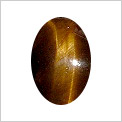 |
Though it can be found in varying colors in warm earth tones, the most common tiger's eye is brown and gold. Its main distinguishing characteristic is the wavy eye-like effect called chatoyancy, an optical phenomenon that creates a single glowing band of light across the surface of the gem. The word comes from a French phrase that means "cat's eye." |
| Lore | Because it was thought that the tiger's eye stone could see all due to its appearance, Roman soldiers wore them for protection in battle. Tiger's eye is said to help focus the mind and to bring about clear thinking and insight. It is believed that tiger's eye offers protection during travel. |
| Enhancements | These stones may be heated, dyed or bleached to enhance their color. |
| Care & Cleaning | A durable gem, tiger's eye can be cleaned with a soft brush and warm soapy water, a jewelry-cleaning solution, and/or a jewelry-cleaning machine. |
| Topaz |
|
| Blue topaz stones are an acceptable birthstone for December. Topaz are available in blue, but also come in a range of colors including: yellow, brown, green, pink, and sometimes no color at all. Topaz stones can also be specially treated to create the ever-popular mystic topaz. | |
| Lore | Topaz are believed to relieve sadness, anger and night time fears. It has also been said, topaz stones protect the wearer from poisons and sudden death. |
| Enhancements | Topaz stones are commonly heat treated or irradiated to produce intense colors. |
| Tourmaline |
|
| Pink Tourmalines are an acceptable birthstone for October. Tourmalines range in color from red to green and blue to yellow, along with black. They can also be made up of two or more colors within one stone. | |
| Lore | This unusual stone has been thought to possess "magical" powers of love and friendship. It is believed that tourmalines will give you a true and long-lasting bond. |
| Enhancements | Some tourmaline stones may be heat treated or irradiated. |
| Care & Cleaning | A durable stone, it is best to clean tourmalines with warm soapy water. |
| Turquoise |
|
 |
Turquoise was one of the first gemstones to be mined by early Egyptians. These stones can vary in color from solid light sky blue to shades of mottled green. Commonly made into beads or carvings, turquoise is found in silver jewelry today. |
| Lore | Turquoise was once thought to have the powers to warn the wearer of danger or illness by changing its color. |
| Enhancements | It is common practice to enhance turquoise with plastic or wax impregnation and dyes. This also serves to seal the stone, deepen its color, and improve its durability. |
| Care & Cleaning | Use a soft brush and warm soapy water. DO NOT use a jewelry cleaning machine. |
| Zircon |
|
| Zircons are a natural gemstone and should not be confused with the manmade Cubic Zirconia. Typically colorless and used to imitate diamonds, zircons can be found in blue, yellow, orange, red, brown and green. Currently blue zircons have become more popular than the white or clear zircon. | |
| Lore | Zircons are thought to provide wisdom, wealth and honor. It is believed that the loss of luster on a zircon is a warning of possible danger. |
| Care & Cleaning | Zircons are somewhat soft, so scratches and sharp blows should be avoided. Zircons are best cleaned in mild soap and water. Do not expose zircons to hot water or household chemicals. |
The chart below lists the weight ranges that correspond to the size designations stated for our diamond jewelry.
Diamond accent: Item contains one or more diamonds and total weights may vary between .005 and .08 carat.
|
We generally show our diamonds enlarged to show detail.
Reference the chart below for both our genuine and synthetic birthstone jewelry. Genuine gemstones are listed by birth month; synthetic birthstones are also colored as shown. See individual product descriptions for details and exceptions.
|
|
|
|
|
|
|
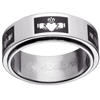

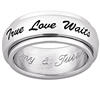
|
|
|
|
|
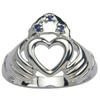
|
|
|
|
|
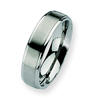
|
|
|
|
|
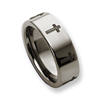
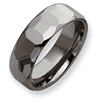

|
|
|
|
|
Storage: Store your jewelry in a cool, dry place, such as a felt-lined jewelry box.
Don't overcrowd your jewelry. Gold and silver jewelry can scratch easily when rubbed against
each other. Silver is best stored in small felt pouches or re-sealable plastic bags to prevent oxidation.
Cleaning: Most fine gold jewelry can be cleaned safely with mild dishwashing liquid, warm water, and a soft toothbrush. Use a clean bowl and soak the jewelry for 10 to 20 minutes. Costume or fashion jewelry with crystals or pearls should not be immersed in water. Gently but thoroughly brush the top, sides and bottom of the piece with a soft brush to remove the softened residue. For gemstones, the underside of the stone should also be brushed. Use a toothpick to reach crevices and other hard-to-reach areas. Check to make sure no stones have fallen out in your cleaning solution. Rinse with clean water either in a fine mesh strainer or in a sink where you can close off the drain. If all residue has not been removed, repeat the above steps as needed. Pat dry with a clean, lint-free cloth. Make sure the jewelry is completely dry before storing. Jewelry Cleaners: If you are using a commercial jewelry cleaner, follow the directions for that product. An inappropriate cleaner can damage stones or settings. Ultrasonic Cleaners: Ultrasonic jewelry cleaners are another option for cleaning, just be sure to follow the instructions carefully. Not all stones can be cleaned in an ultrasonic cleaner. Ultrasonic cleaners are ideal for gold and for jewelry set with diamonds, rubies, and sapphires. Other non-porous stones may be put in an ultrasonic cleaner but be sure to check a jewelry-care guide or with your jeweler before cleaning. |
|
|
Housework: Many household cleaners and chemicals can discolor or damage jewelry.
Yard Work: Never wear jewelry while doing yard work. Exposure to sweat can cause tarnishing and tools can easily scratch jewelry. Swimming: Never wear jewelry while swimming in chlorinated water. Chlorine will turn silver black, strip gold plating, and weaken any soldering and prongs. Toothpaste: Toothpaste should never be used to clean jewelry, despite the recommendation of magazines and websites. Toothpaste contains abrasives that can scratch the surface of jewelry. Pockets: Never put jewelry in your pocket; it can easily be scratched if it rubs against other items with hard surfaces. Also, chains, necklaces, and bracelets can easily tangle and weaken. Daily Routine: Never wear jewelry while shaving or bathing. Chemicals, such as those in perfumes or moisturizers, can be harmful. Make sure that your jewelry is the last thing you put on before you leave in the morning and the first thing you take off when you get home. |
|
|
Moisture: Tarnishing will happen more rapidly in areas where the weather is more humid
or in coastal areas where sea salt is in the air.
Perspiration: Everyone's body chemistry is different, which is why even contact with your own skin can cause tarnishing. Sweat is rich in sodium chloride, a common salt, and can cause tarnishing. Chemical Agents: Perfume, hair spray and deodorant sprays can tarnish your jewelry. Cooking: The sulfur compounds and acids in foods like onions and spices can contribute to tarnishing, so avoid wearing jewelry during food preparation. Air Exposure: Even exposure to air can cause tarnishing. Proper jewelry storage can help prevent this. |
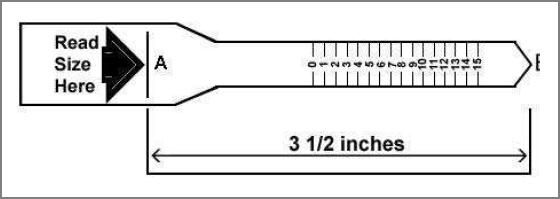
Click the image aboove or here
to open a printable PDF file.
To print the ring sizer above, be sure that your printer is set to 100%. You can verify that the sizer printed correctly by measuring it with a ruler; it should measure 3 ½ inches long from A to the point.
Once you have printed out the sizer, follow directions below to find your ring size:
- Cut out the ring sizer
- Cut a slit for Slot "A"
- With the numbers facing out, wrap the sizer around your finger at the largest point. Probably the knuckle.
- Pull the pointed end through Slot "A" until the sizer is snug.
- The number lined up with Slot "A" is your approximate ring size.
- If the measurement lands between two numbers your size is a half size. (Ex: Between 5 and 6 ring size: 5.5.) If half sizes are not available, order the next largest size.

Here are some helpful tips and details to help you purchase the best digital camera for your needs and budget.
Fixed-Lens Cameras
Fixed-lens cameras have a lens that is fixed to the body. These types include point-and-shoot cameras, compact cameras and long-zoom cameras. Basic point-and-shoot cameras are great for snapshots, social media and short video clips.
- Designed for automatic and some manual operation; some point-and-shoot cameras may not have manual controls
- Lens fixed to the body
- Point-and-shoot and compact cameras are sized to fit in your pocket or purse
Interchangeable-Lens Camera
Interchangeable-lens cameras (ILC) deliver better quality images and videos than compact cameras.
- Designed for automatic and some manual operation; some point-and-shoot cameras may not have manual controls
- Lens fixed to the body
- Point-and-shoot and compact cameras are sized to fit in your pocket or purse
DSLR
Digital SLR (DSLR) cameras deliver excellent quality images and videos, even in low-light shooting situations.
- Designed for manual and some automatic operation
- Feature large sensor, top-quality lens, high ISO sensitivity and fast shutter response
- Larger sized
- TTL (through the lens) optical viewfinder
- Manual controls for focus and exposure
Here are some key specifications you should be aware of when choosing the model that best fits your needs.
Megapixels
Megapixels (MP) are a camera's image sensor resolution measured in millions of tiny dots (pixels). The number of megapixels a camera has determines the amount of resolution you have in your pictures and how large or small you can display or print photos. Most digital cameras have plenty of high resolution, so you generally don't need to worry about having enough megapixels.
Image Sensor
The camera's image sensor converts light into a digital image. The most common types are CCD (charge-coupled device), CMOS (complementary metal-oxide semiconductor) and BSI (backside illuminated) CMOS. Cameras with CMOS sensors produce the best image quality in varying light conditions and are typically more expensive. The size of the image sensor is usually measured in fractions of an inch. In most cases, the larger the sensor, the better the picture quality.
ISO Sensitivity
ISO sensitivity is a camera's sensitivity to light. A higher ISO sensitivity gives the camera better ability to shoot in low-light situations.
Zoom
Optical zoom uses the lens (optics) of a camera to bring a subject closer.
Digital zoom is a digital enlarging of an image that "simulates" optical zoom. With optical zoom, you won't see any image quality tradeoffs. With digital zoom, since you're enlarging pixels already present, the quality of an image will decrease as the image gets larger.
Image Stabilization
Also known as "anti-shake," image stabilization (IS) helps prevent blurred images. It reduces the vibration caused when you shake, quickly move the camera or use slow shutter speeds.
Memory
Memory is the storage capacity within your camera or on the memory cards you insert into your camera. High megapixel cameras can take wonderful shots, but they also use a lot of memory. When purchasing your camera, consider the type of memory card it uses; sometimes it will be the same type used on an MP3 player or other device you own, so there could be some added convenience there. It's also a good idea to buy extra memory cards for yourself, so you'll always be able to take shots. For more information, see Camera Memory Options below.
Video and Sound
Almost all digital cameras let you capture short videos with sound in addition to still shots. Some let you capture video in HD (720p) or Full HD (1080p) resolution for viewing on a compatible HDTV or computer display. High-resolution images take up more memory than low-res images, and video captures use more memory than photo captures.
Display
On the back of digital cameras you'll find an LCD display (or monitor) that is your guide to taking digital shots. It frames your photos like a viewfinder and lets you see images after you capture them. The display also lets you view the camera's menu and setting options. Some displays tilt and swivel, making it easier to view and operate. There are also touch screen displays for added convenience.
Viewfinder
Look at each camera's viewfinder and choose the style you'll be most comfortable with. Point-and-shoot and compact cameras typically give you a direct view of the scene. An electronic viewfinder (EVF) is ideal for shooting videos. A TTL (through the lens) viewfinder is used in DSLR cameras.
Focus
Auto focus is a key feature in most cameras, automatically focusing on a subject in your viewfinder or display. Macro focus is ideal for close-ups.
Flash
Flash modes vary by camera. Compare each camera's flash capability and get the type of flash that will work best for the majority of shots you'll take.
Self Timer
A self timer allows the camera to shoot a photo automatically after a delay. This gives you time to frame a group shot, then shoot the image with you in it.
Wi-Fi
Digital cameras with built-in Wi-Fi let you wirelessly transfer photos and videos to social media sites such as Facebook and Twitter. Some models may back up your images to a cloud service or computer and connect to a mobile device for viewing, editing and uploading to sharing sites.
Charging Mode
Most digital cameras have a built-in rechargeable battery. Some require disposable batteries. When choosing your digital camera, you should consider the various options for batteries, the battery life of a rechargeable battery when fully charged, and what best fits your needs.
Waterproof/Shockproof/Dustproof
For shooting in extreme conditions and near water, a camera that is waterproof, shockproof and dustproof is a great option. There are also underwater cameras, which are rated to a maximum number of feet. For instance, an underwater camera rated to 10 feet would be great for shooting photos in a pool. For scuba diving or snorkeling, an underwater camera would require a higher feet rating.
A digital camera's memory card is like a roll of film. The most popular types of memory cards used in digital cameras are SD and microSD cards. A memory card stores your images until you're ready to view them on your computer or print them. Once your memory card is full, you can take it out of the camera and replace it with a new one, or you can transfer your photos from the card and use the card again.
Memory cards are measured in megabytes. The more megabytes you have, the more pictures you can fit on the card. You can also fit more pictures on a card by reducing the quality of the images that you're shooting.
Digital cameras generally come with minimal internal memory. It's a good idea to have memory cards on hand so you can take more pictures. Just as you wouldn't go on vacation with just one roll of film, you shouldn't pack just one memory card.
Use this helpful buying guide to find the perfect HDTV for your needs and budget.
Your choices for HDTV screen type include LCD, LED, plasma and 3D. Here are some key features for each type:
LCD HDTVs
- LCD (liquid-crystal display) TVs emit fluorescent light
- Ideal for watching TV in well-lit rooms
- Good contrast ratio and black level
- Available in a wide range of screen sizes
- Good to very good wide viewing angles
- Generally brighter than plasma TVs and hold contrast better in bright lighting
Tips: Weigh less than plasma TVs. Picture slightly less natural than plasma TVs.
LED HDTVs
- LED TVs are LCD TVs that use LED (light-emitting diode) backlighting
- Perfect for watching TV in all lighting conditions
- Better contrast ratio and black level than LCD
- Available in a wide range of screen sizes
- Good to very good wide viewing angles
- Generally brighter than plasma TVs and hold contrast better in bright lighting
- Energy efficient LED backlit TVs use less power than LCDs and plasma TVs to save you energy and money
Tips: Weigh less than plasma TVs. Picture slightly less natural than plasma TVs.
Plasma HDTVs
- Plasma TVs have phosphor coating to create lifelike colors
- Great for watching TV in dark or dimly lit rooms
- Better contrast ratio and black level than LCD or LED
- Great for viewing fast motion with no blurring
- Excellent wide viewing angles
Tips: Weigh more than LCD and LED TVs.
3D HDTVs
- 3D TVs let you view standard and high-definition 2D content (just like a regular HDTV) as well as 3D content
- Available on LED and plasma TVs
- Require a 3D source device (such as a 3D Blu-ray Disc player), 3D content (such as 3D Blu-ray Disc, 3D cable/satellite, 3D internet streaming and 3D games) and 3D glasses
Tips: 3D TVs require active or passive 3D glasses (depending on manufacturer and model) to view 3D content; active glasses use LCD shutters that run on batteries while passive glasses use polarizing lenses similar to what is used in movie theaters.
Most people prefer a bigger screen when buying an HDTV, but you should also consider the size of the room the HDTV will be in, as well as how close you plan to sit and at what angles.
Room size and viewing distance
The bigger the screen, the farther away you should sit from it. Recommendations for optimal viewing distances range from 1-1/2 to 3 times the diagonal screen size of the TV. For example, the ideal viewing range for a 42" TV would be between 5-1/4 and 10-1/2 feet.
Viewing angles
Viewing angles tell you the maximum angle you can watch the TV from. Viewing angles are measured horizontally and vertically. Look for high viewing angles for the most flexibility in placement and seating.
A digital television picture is made up of hundreds of lines of visual information. The maximum resolution is the amount of detail in an image measured in pixels. HDTVs with higher resolution have greater picture definition.
HD (720p) resolution
HD (720p) HDTVs have 720 lines of resolution scanned progressively for a very smooth, film-like image.
Full HD (1080p) resolution
Full HD (1080p) HDTVs have 1,080 lines of resolution scanned progressively. Full HD resolution is required to view 1080p content such as Blu-ray Disc movies.
4K resolution
4K HDTVs have twice as many vertical and horizontal lines as a Full HD HDTV, resulting in a picture 4x the total resolution of 1080p.
Learn about key terms related to picture quality.
Screen Refresh Rate
The screen refresh rate is the number of times per second that the picture is redrawn. 60Hz is the standard refresh rate. Many HDTVs now offer 120Hz and 240Hz refresh rates to eliminate motion blur.
Response Time
Measures the picture quality of a TV in milliseconds (ms). A lower number means less distortion or blurring of an image.
Contrast Ratio
Contrast ratio is the difference between brightest white and darkest black the TV can display. The higher the contrast ratio, the more color detail you will see.
Aspect Ratio
16:9 is the widescreen aspect ratio. Because high-definition content uses the 16:9 aspect ratio, HDTVs have the 16:9 aspect ratio and often offer a 4:3 mode for optimal viewing of standard content.
Progressive Scan
Progressive-scan technology displays the entire picture in a single sweep, while interlaced scans every other image line and displays the picture in two fields. If you have a progressive-scan DVD player, you must also have a progressive-scan TV to take advantage of that feature.
Comb Filter
Comb filters correct detail and color loss to enhance picture quality when your TV is hooked up using composite video connections. A comb filter is not used when your TV is hooked up via S-video or component video connections. The most common types of comb filter available today in order of increasing quality are 2-line digital, 3-line digital and 3-D digital.
Familiarize yourself with these convenience options to help you decide which features are important to you.
Portability
HDTVs with smaller screen sizes can easily be moved from room to room to prevent you from having to buy a separate TV for every room. For maximum portability, look for screen sizes 20" and under.
Built-in DVD Player or Blu-ray player
A built-in DVD player or Blu-ray player saves you from having to buy a separate video player and is easier to carry to other rooms than a TV plus another component.
ENERGY STAR Qualified
ENERGY STAR qualified products meet strict standards for energy efficiency, so you save money on your bills.
Picture-in-Picture
Picture-in-picture provides two or more viewing windows. In order to watch two TV programs at once, the TV needs to have two tuners. If it only has one tuner, the second picture will have to come from another source, such as a DVD player or video camera.
Alarm and Sleep Timers
Alarm and sleep timers let you set the TV to turn on or off after a certain amount of time, so you can wake to TV or watch as you doze off.
V-Chip
All TVs with a 13" or larger screen have a V-Chip that allows parents to block access to TV programs based on the rating, such as TV-PG, TV-14 and TV-MA.
Simulated Surround Sound
Simulated surround sound or virtual surround sound creates a surround sound effect using the TV's built-in speakers.
Sound Leveler
A sound leveler keeps the volume of your TV within a certain range regardless of how loud the source volume is, so you won't get a big volume spike when a commercial comes on.
Learn about key terms related to TV connections.
HDMI
HDMI (high-definition multimedia interface) provides the best quality audio and video transmission along one cable for a clutter-free connection and supports the transmission of copy-protected high-definition content.
USB
Allows you to connect a variety of USB-enabled devices, such as MP3 players, camcorders and digital cameras.
Memory Card Slots
Memory card slots allow you to insert memory cards to play content, such as digital audio, video and still images on your TV.
Component Video
Improves picture quality by splitting the video signal into three parts. Component video connections deliver better picture quality than composite video and S-video connections and are the only analog connections that can support high-definition signals.
Composite Video
Standard video connection that uses an RCA-type connector.
S-video
Delivers separate color and black-and-white video signals to provide better picture quality than composite video connections.
Stereo Audio
Standard left and right audio connections that use RCA-type connectors.
Digital Audio
Optical (fiber optic) and coaxial digital audio connections offer better sound quality than stereo audio connections and support multichannel audio.
PC Inputs
VGA (standard analog) and DVI (digital video interface) inputs let you use your TV as a monitor for your computer.
Ethernet
An Ethernet connection allows you to access available internet content directly on your HDTV.
Front/Side Inputs
Front and side A/V inputs allow easy connection to devices that you don't intend to leave hooked up permanently, such as video game consoles and camcorders.
Bring the theater home
If you are creating your own personal theater, you'll want to consider a stand that is designed to accommodate large screen sizes and has a high weight capacity for your big-screen TV. Also, look for additional storage for A/V components and media.
Save space
If you want to maximize space in your home, consider a wall mount to place your TV on the wall for a sleek look that is also a practical space saver. Wall-mounted storage units provide additional space for your media. A space-saving corner unit will let you display your TV in style without commanding a large portion of the room.
Keep your style
You love the style of your living room and don't want the centerpiece to be a large TV and A/V components. By selecting A/V cabinets with doors and an armoire style TV stand, you can enclose your components behind doors for a sleek look that removes the TV from always being the main focus of the room.
TV stands and entertainment centers
Size of TV supported in inches and weight. The recommended capacity is the largest size and weight of TV that the stand can safely support. Your TV should be at or under the maximum weight and screen size recommended by the manufacturer.
|
Stand type. The next step is to determine whether you want a TV stand or an entertainment center. TV stands are usually smaller units with one or two shelves for storage and are designed to hold your TV and a couple of A/V components. Entertainment centers are larger units that are often combined with media storage to provide more storage for home theater components, media and decorative items. |
|
|
|
Additional storage features. If you plan to create a home entertainment center for all of your home theater components, you'll want to look for a storage solution with multiple shelves and/or drawers for components and media. |
Media storage cabinets and wall units
If you are just looking for a place to store your DVDs or CDs or are looking to add an additional storage unit to an existing entertainment center, then a media storage cabinet or wall unit can provide a solution for your storage needs.
|
Number of CDs or DVDs stored. The main item to consider when purchasing a media storage cabinet or wall unit is the number of CDs, DVDs, Blu-ray Discs and/or VHS tapes that can be stored in the unit. Most units can store a combination of media and the number of items held varies according to the type of media. |
|
|
|
Wall-mounted or freestanding. Freestanding media storage cabinets provide storage for a large number of discs but also take up additional floor space in your home. Wall-mounted units can complement your wall-mounted TV and do not take up valuable real estate in your living room. |
Wall mounts
For a sleek look in your living room or media room, another option for placing your TV is to purchase a wall mount. Wall mounts allow you to eliminate the need for an additional piece of furniture. They also let you place your TV at a convenient height and angle for viewing throughout the room. While CRT TVs use shelf-style mounts, flat-panel TVs use VESA-compatible mounts that attach via a pattern of holes.
|
VESA (Video Electronics Standards Association). There are four mounting holes on the back of your flat-panel TV. The distance between these mounting holes determines the VESA compatibility of your TV. Most TV manuals will list the exact VESA compatibility for your TV, which includes the horizontal and vertical distance between mounting holes. |
|
TV size and weight. Wall mounts for both CRT and flat-panel TVs have a maximum supported TV size and weight. You will need to select a mount that will fit the size and weight of your TV.
TV stands
|
|
|
|
Corner. These TV stands are designed to fit into the corner of a room to save space. Most have minimal additional storage for components and media.
Console. These stands are designed to be placed against any wall and generally provide some storage for components and shelves for media.
Flat-panel stands. These stands are designed with an attached mount that lets you mount the TV to the back of the stand rather than placing it on top of the stand.
Entertainment centers
|
|
|
Wall units. Wall units combine an entertainment center console with additional storage towers for added storage of A/V components plus display space for decorative items.
Console. Console units are designed to be placed against any wall and have additional storage for components and shelves for media.
Media Storage
|
|
|
|
Wall-mounted units. These media shelves mount to the wall to provide additional storage for CDs, DVDs and other media without taking up additional floor space.
Storage towers. These freestanding storage shelves provide space for a large number of CDs, DVDs and/or other media. Some storage towers are designed to combine with entertainment center consoles to create a large media wall unit.
Media cabinets. Media cabinets provide storage for CDs, DVDs and other media while adding a stylish look to your décor. Some media cabinets have doors that conceal media for a streamlined look, while other media cabinets feature glass doors for easy visibility.
CRT TVs
|
Platform/shelf. Platform or shelf wall-mount design is used for CRT TVs. The TV set rests on a shelf that is on top of the support arm attached to the wall. These mounts may be designed with an extra shelf to hold a TV plus an additional component, such as a cable box or DVD player. |
|
|
|
Flat-panel LCD and plasma TVs These mounts feature a moveable arm that allows a variety of viewing angles for added flexibility. These mounts move side to side and also pan up and down for a variety of positions. |
Tilt. Tilt mounts allow you to angle the TV up or down up to 15 degrees and some can be locked at certain settings. Tilt wall mounts need to extend further out from the wall to accommodate the tilting mechanism. A tilting mount is recommended when reflections from windows or lighting interfere with TV viewing or when multiple viewing angles are desired.
Fixed/low-profile. This is your basic TV wall mount consisting of a girder that attaches to the wall and two upright posts or a plate to connect to your flat-panel TV. The thinnest mounts only extend about an inch from the wall. This mount does not pan, tilt or rotate; it just hangs your flat-screen TV on the wall like a painting.
Swivel. With a swivel feature, you can change the tilt and angle to get the best view of your TV.
TV stands and entertainment centers
Material and finish. TV stands and entertainment centers are constructed of a variety of materials including solid wood, wood products (MDF, fiberboard) and metal. You should select the type of material based on durability and how the material of the stand complements your existing furniture. The stands also come in a variety of finishes, including black, cherry, maple and more.
Furniture style (contemporary, traditional, mission, rustic). Similar to other pieces of furniture, TV stands and entertainment furniture are designed in a variety of styles, including rustic, traditional, mission and contemporary. With a wide variety of styles, you can match your entertainment center or TV stands to your existing home décor.
Hardware and assembly. Most TV stands and entertainment centers require some level of assembly using the included directions from the manufacturer and the included hardware. Stands also include anti-tip brackets or other safety brackets to make sure your flat-panel TV is securely attached to the stand.
Cable management
Create an organized way to bundle cables from various components that you place on or in your TV stand or entertainment center.
Built-in component shelving and media storage
Add flexibility and versatility to your entertainment furniture, giving you the ability to place additional components, media or decorative items on the stand.
Casters
If you want to be able to move the TV stand from room to room, built-in casters make it simple to roll the stand from place to place.
Media storage
Material and finish. Media storage components are constructed of a variety of materials including solid wood, wood products (MDF, fiberboard) and metal. You should select the type of material based on durability and how the material of the stand complements your existing furniture. Media storage also comes in a variety of finishes, including black, cherry, maple and more.
Capacity. When choosing a media storage piece, consider how many CDs, DVDs and/or VHS tapes you have and match to the storage capacity of the media cabinet.
Hardware and assembly. Most media storage pieces require some level of assembly using the included instructions from the manufacturer and the included hardware. Most entertainment centers also include anti-tip brackets or other safety brackets to make sure your flat-panel TV is securely attached to the stand.
Wall mounts
Material and finish. Wall mounts are constructed of metal for added strength and durability. They are usually black or silver so you can choose one that matches the color of your TV.
Hardware and installation Installing a wall mount requires locating a stud in the wall where you want to place your wall mount. Once you have chosen a location and located a stud, you can install your wall mount according to the manufacturer's directions.
Cable management. Wall mounts with cable management hide A/V cables connecting your TV to a cable box or other components and eliminate unsightly cables hanging down the wall.
Antitheft TV lock. Locks are designed to secure your TV onto the mount to prevent theft by using bolts and/or padlocks.
Complement both your home décor and your TV with the addition of an entertainment center, TV stand, media storage or wall mount as part of your home theater setup.
When choosing your entertainment center, wall mount or media storage, remember the following:
-
Size and weight capacity of the stand
-
Whether you are looking to build a home theater, keep your style or conserve space
-
There are various types of entertainment furniture and storage units
-
There are various wall mount types
Outdoor is usually better than indoor
Outdoor antennas have a better view of the transmitting station, with no signal loss caused by building interference. Outdoor antennas are not affected by interference from other household electronic/electrical appliances, and they are less likely to receive reflected ghost signals from your building.
Locate your antenna up high
You will want to place your TV antenna in the highest location possible so that it can receive the most direct signal from the TV transmitter. A higher location also reduces the interference of signals from other electronic and electric appliances in your home.
Size matters
The larger an antenna, the more signal it is able to receive. Most larger antennas also are directional, which reduces ghosting caused by reflected signals from the side and rear of the receiving antenna.
One of the first decisions you will need to make is where the antenna is going to be placed. Antennas are available in indoor, outdoor and indoor/outdoor versions. Whether you choose indoor or outdoor may affect your ability to receive a strong enough signal from your local broadcast stations.
Indoor antennas
Indoor antennas are designed to be connected to your HDTV. Indoor antennas are placed indoors near the TV set. The antenna can be either a flat digital antenna or a more traditional style antenna with dipoles. While indoor antennas provide a quick connection to your HDTV without the outdoor installation, the signal reception can be weak because of the interference from walls, cordless phones and other household objects.
|
|
|
Outdoor antennas
Outdoor antennas are often significantly larger than indoor antennas and are intended for mounting on a roof or in an attic. The antenna can be either a flat digital antenna or a more traditional style antenna with dipoles. Outdoor antennas usually perform better than indoor antennas because they are not affected by interference from household objects and do not have the height disadvantage of indoor antennas.
|
|
|
Indoor/outdoor antennas
Indoor/outdoor antennas can be placed either indoors or outdoors to provide added installation flexibility.
|
|
Directional or multidirectional
Indoor and outdoor antennas can be directional or multidirectional. Directional antennas are designed to receive signals from one direction, while multidirectional or omnidirectional antennas are able to receive signals from all directions. Directional antennas are able to pull in signals from a greater distance because they focus in one direction, whereas multidirectional antennas are more likely to pick up noise, interference and distortion because they pull signals from multiple directions.
Deciding which type of antenna you need
The type of antenna you need depends on the distance your home is located from the broadcasting towers and on the environment in which you are installing the antenna. If you are located close to the broadcasting towers, you can usually receive signals with an indoor antenna. If you want to pick up more distant TV stations, an outdoor antenna will be required. The greater the distance, the more powerful the antenna you will need.
To determine the type of antenna to purchase, you need to determine which broadcasts are available in your area and which antenna will work based on your area. In determining the type of antenna, it is important to take into consideration your distance from the transmitting tower, whether there are large buildings around and the terrain.
|
In order to receive over-the-air HDTV signals, your TV must have a digital or ATSC tuner connected or be connected to an external digital tuner. |
|
ATSC/digital tuner built in
Most TVs are now manufactured with a built-in ATSC or digital tuner. This tuner allows you to receive high-definition over-the-air signals with the addition of an external antenna.
NTSC/analog tuner built in - converter box or external ATSC tuner required
Older analog TV sets that were built prior to the conversion to digital TV have NTSC tuners built in. These tuners are not capable of receiving over-the-air high-definition TV signals. In addition to an antenna, a digital converter box or an external HDTV tuner is required for these TVs to receive over-the-air high-definition signals.
No tuner built in - external ATSC tuner required
These TVs have no tuner built in and are sometimes referred to as monitors. In addition to an antenna, an external HDTV tuner is required for these TVs to receive over-the-air high-definition signals.
Digital signals can be broadcast over two different frequency ranges: VHF (very high frequency) and UHF (ultra high frequency). Most of the high-definition TV broadcasts are currently in the UHF band which makes UHF coverage a must for any antenna purchase. However, a dual-band UHF/VHF antenna will let you receive both bands for added convenience.
The difference between UHF and VHF antennas is mainly size because antenna elements are built based on the size of the waves they receive. VHF frequencies are lower so a large antenna surface is needed to receive them.
Hardware and installation
Large outdoor antennas can be installed on a roof, a freestanding pole or in an attic. For best results, your antenna should have the clearest possible view of the transmitter tower. When aiming the antenna, use a compass to ensure your antenna is accurately and precisely oriented toward the signal source. Indoor antennas can be connected to your TV through a coaxial cable.
Signal amplifier
A signal amplifier can help to overcome size or height issues or to enhance the overall signal gain of an antenna. The amplifier can be built in, which is common with indoor antennas, or can be a separate device that installs in-line between the antenna and TV. An amplifier that installs on an outdoor antenna is often called a preamplifier.
-
Indoor versus outdoor placement?
-
Is your TV compatible with high-definition signals?
-
Signal strength at your location will help to determine the type and location of antenna
-
Outdoors is usually better than indoors
-
Higher placement is better
-
Size matters
From simmer and sauté to griddles and grills, there are almost limitless ways to make your dishes and meals. Here at Fingerhut, we want you to have the best tools at your fingertips so you can cook to your heart's desire. Here's some helpful information on pan types and materials and how they're used, so you can make the right choices for your kitchen. Let's start with types and uses of pans...
Saucepan. The perfect pan for making sauces, cooking or heating up veggies, making rice and soups and more. Probably the most used pan in any chef's kitchen.
Sauté pan/Deep-fry skillet. You can use this type of pan for many different things, such as searing and browning foods over higher temps. The straight sides help reduce spattering.
Open French skillet. The slanted, more open sides make this a versatile pan for everything from sautéing and searing to frying, browning and simmering.
Griddle. Sausages, pancakes, burgers and veggies all cook up nicely on a griddle's flat, even-heating surface. Also great for roasting chilies, and making tortillas and crepes.
Chef's pan/saucier. This pan features sloped sides, which draw foods to the center of the pan and the flat bottom, making it perfect for reducing liquids, braising meats, making risotto and more.
Grill pan. The ridged grill surface separates the drippings from the meat and other foods so they absorb less oil, making this a healthy cooking option.
Stockpot. The deep container keeps ingredients submerged in the cooking liquid, and reduces liquid evaporation which is ideal when making stews and soups.
Roaster with rack. The elevated sides on a roasting pan help keep spatters down while the rack holds the food (meat, veggies, whatever you like) up and out of the drippings, which crisps the food. Sometimes it comes with a lid.
Stir-fry pan/Wok. This rounded pan heats food evenly and quickly, so it's ideal for flash-cooking meats and veggies over higher heat. Also allows off-heat placement on sides of pan for classic stir-fry cooking.
Egg poacher. These nifty devices cook eggs in individual cups so they can be removed separately and at different times, according to each person's taste.
Pressure cooker. An ultra-efficient way to prepare foods, the pressure cooker features a lid that locks and a valve that keeps the steam inside, reducing cooking times up to 70%. This keeps more nutrients-and flavor-intact.
Double boiler. It's a two-chamber setup, featuring a water boiler in the bottom half, providing indirect heat to foods in the top half. This is the ideal way to melt chocolate or prepare delicate sauces. It usually comes with a lid.
You'll find almost as many materials in pans as there are types of pans themselves. Different cooks like different materials, and different materials have different strengths and weaknesses. This handy chart from the kitchen experts at Fingerhut will help you make the right choice when purchasing your pans.
| Material |
Strengths |
Weaknesses |
| Stainless steel |
|
|
| Hard-anodized aluminum |
|
|
| Aluminum |
|
|
| Cast iron |
|
|
| Porcelain-Enameled cast iron |
|
|
By now you have a good idea about all the different types of pans, what they do, what they're made of, and some of the plusses and minuses for each. Now here's the final criterion to help you choose the best pans for your needs: how to care and clean for them.
Every cook wants to have his or her pans last a long time, and the proper care and cleaning can help you accomplish that. Here's a care-and-cleaning checklist to consider, both when buying your cookware, and once you've got it in your kitchen.
Proper care:
- AVOID OVERHEATING. The general rule for keeping your cookware in good shape is to avoid overheating. It can cause discoloring and warping.
- WATCH THE HEAT. Once you've reached the peak cooking temperature for the food you're cooking, reduce the heat right away. Many of today's pans are made to heat quickly and evenly anyway, so you shouldn't need too high a heat in most cases.
- USE SOFTER UTENSILS. Today's non-stick surfaces are handy to cook with but scratch easily, so it's best not to use metal and hard plastic utensils on them. Use wood, rubber or nylon for best care.
- DON'T BOIL DRY. Letting a pan boil down until it's dry can discolor and warp the pan.
- CHECK THE FLAME. When using a gas flame burner make sure the flame doesn't reach up over the sides of the pan. This can discolor the pan and cause damage to interior and exterior surfaces, including handles.
Proper cleaning:
- Even though many pots and pans come as "dishwasher-safe", it's a good idea to hand-wash them anyway. Dishwashers can dull the finish and harsh detergents can pit surfaces.
- Non-stick pans should never be cleaned with harsh scouring pads. Use dishcloths, soft sponges or plastic scrapers instead.
- For pans with rivets in the handles and elsewhere, be sure to clean around the rivet heads where small particles of food can gather and stick.
- Boilovers happen, and when they do, it's important clean the entire pan, inside and out, with warm soapy water by hand. Particles of food that get lodged in the pan can become unsanitary (not to mention unsightly!), so be sure to give pans that have boiled over a good scrubbing.
- Hard water, acidic foods and salt can discolor a pan's surface. Use a cleanser recommended for your type of pan to clean t6hese spots.
- If your pans have been overheated to the point of becoming discolored, there are high-quality stainless steel cleaners available to remove this type of stain.
Here are some helpful tips that can steer you in the right direction for all your cookware purchases at Fingerhut.
- First, review the information in this Cookware Buying Guide on types of pans, types of materials, and how each is used. This is the best starting point for understanding what you need and what you should get.
- Review the pans you already own, and decide what your real needs are. Do you want to complement the shapes and sizes you already have with ones you don't? Are you replacing old or worn-out pans?
- Once you know what you're missing and needing, you can compile a list of the pans you can start shopping for. Decide if a complete set makes sense, or an individual pan. Also, what is your budget? Can you get more expensive pieces, or will you need to economize?
- Once you've compiled your list, look for the types of pans and materials that will work best for your needs. For example, cast iron might be a great choice to fill a current need, but do you have storage for such a heavy pan?
- Think about sizes of pans; it's a good idea to err on the high side-you can always boil 8 quarts of water in a 12-quart pan, but not the other way around!
- Consider handles. If a pan seems heavy when it's empty, it's going to be even heavier when it's full of food. Get the type of handles you're most comfortable with.
- Look at sets if you want a better bargain. Sets can often save you up to 30% or more compared to buying individual pieces.
- If you're not buying a new set, and already have individual pieces you're going to keep, remember: Most home cooks mix and match their cookware, with different styles and brands for different uses and needs.
- Once you have your new cookware, treat it with care and you'll enjoy long-lasting use for each and every piece.
| Bedding Sizes for standard bedding | ||
|---|---|---|
|
When ordering sheet sets, comforters, blankets and other bedding, use the chart below sheet sets fit a standard mattress 7" to 9" high. See the Bed & Bath section for sheets that fit higher "oversized" mattresses. |
||
| Twin 39" x 75" | Full 54" x 75" | Full/Queen 54" x 75" or 60" x 80" |
| Queen 60" x 80" | King 78" x 80" | Cal. King 74" x 84" |
Bedding made from down is a popular choice, but for many people, it's frequently misunderstood. Here is some helpful information to guide you in making the right choice about down bedding, especially compared to other materials like feathers.
What is down?
Down is nature's insulation, it's the undercoat found on waterfowl that traps warm air next to the bird's skin. It keeps our feathery friends warm in winter and cool in summer-just how humans happen to like it, too. Each down cluster contains thousands of plumules-soft fibers going in all directions from a central point. Feathers, on the other hand, cover the body of a duck or goose and, unlike down, contain a hollow quill shaft that radiates filaments on a flat plane.
What's the main difference between down and feathers?
Feathers protect the outside of the birds so they're stronger and withstand exposure to the elements. So feathers are stiffer and more durable than down. Down, on the other hand, is softer and more lightweight. Goose down plumules are generally larger, loftier and stronger than duck down plumules.
What are the main uses of down?
Down is used as filler in pillows, throws, blankets, and most often in comforters. (It can be used in these applications in combination with feathers, too.) Sometimes, down is used in featherbeds, which are placed on top of mattresses.
What are the main benefits of down?
Down is one of the best natural insulators and can keep you toasty warm on even the coldest nights. Plus it's very light, so you don't need to smother yourself under multiple layers of heavy covers. In pillow form, down offers the plushest, cushiest comfort and flexibility. Many people believe down bedding is the most comfortable bedding you can buy.
How do I care for my down bedding?
Down is relatively easy to care for. Just follow these simple guidelines for long-lasting use and comfort:
- Fluff your down bedding daily to give it air flow, which helps down keep its loft.
- If using down only for winter, store it during the off-season in something that "breathes", like a mesh laundry bag. If it can't breathe, it might mildew.
- Protect your down during use with a duvet or comforter cover-like a big pillowcase for your down. A down pillow should be covered like any other pillow with a pillow protector and pillowcase.
- Have your down professionally laundered every 3 to 5 years. You can machine launder most down, but be careful to follow the instructions on the label of the down bedding. But it's easier and safer to have it done by a pro.
- Just like people, down enjoys a good breath of fresh air, so once in a while air out your down bedding out of doors. A clear, sunny day brings freshness to down.
What makes a pillow right for you? And how do you know when to replace an old pillow? These are just a few of the handy tips we're providing for you here, to help you make the right pillow purchase at Fingerhut.
When is it time to retire my pillow?
- If your current pillow is uncomfortable in any way or doesn't feel like it did when you bought it
- If your pillow is lumpy, flat, lost its shape or stained
- If your poor old pillow has "sprung a leak" and is losing its stuffing through holes or seams
What are pillows made of?
Natural Fills:
- Cotton. One of the most popular fills, it feels firmer and appears flatter than other fills
- Down. See our Down section for details about this remarkable natural fill. It's exceptionally soft and fluffy. Fill power (number of ounces of down) matters; the higher the number, the better the quality
- Feathers. These are more durable than down and provide more support, but are flatter and don't provide as much softness.
- Wool. It's a great insulator and keeps you at a comfortable temperature, plus it wicks moisture away.
Synthetic Fills:
- Down-type synthetics. They may not be the real thing, but down-style synthetics are pretty nice and fluffy and imitate the softness of down without the cost...or potential allergens.
- Polyester. Three reasons polyester is so popular: It's light, strong and durable. Five more reasons: It's inexpensive, versatile, wrinkle-resistant, hypo-allergenic and washable.
- Foam. Great for supporting the neck, back and spine, foam is also synthetic so it's a good choice for people with allergies. Foam pillows are designed to be ergonomic: shaped to evenly distribute pressure. Made of heat-sensitive foam that's breathable, foam pillows mold to your body and keep your body temperature even for cozy, comfy sleeping. Look for our foam mattress pads, too, for a sleeping experience beyond compare.
What's my best choice of pillow for the way I sleep?
A good night's sleep has everything to do with keeping your neck and spine aligned. Your sleeping position tells you the most about what type of pillow you should use. Most people move around in their sleep, but you probably have a favorite position-usually stomach, back or side. Here's how you can choose:
- Stomach: This is not the position that's best for your neck's comfort and health, but many people do tend to sleep on their stomachs. If you're one of them, you can lessen the strain on your neck by choosing a flat pillow, with less fill, so it's softer and lighter.
- Back: The best pillow for those who sleep on their backs is a medium-firm, average-fill pillow. It provides correct neck support and gives your head the right amount of softness.
- Side: A firm, extra-fill pillow is ideal for those who sleep on their sides. You get enough support so that your neck is correctly lined up with your spine, which is important for side-sleepers.
- Not sure or frequently change positions: If you're unsure, it's best to choose a pillow that's soft enough to be fluffed/adjusted to give the comfort you want in various positions. Natural fill pillows do this well since they are very flexible.
How about the size of the pillow?
One factor in determining the size of the pillow that's best is the size of your bed and/or current bedding. If your coordinated bedding has standard-sized pillowcases, for instance, you probably don't want king-sized pillows-unless you also plan on replacing the bedding. However, you do have options: You don't have to keep the pillow on the bed or dressed in a matching sheet set, for example. A new pillow that doesn't fit your current set can be stored elsewhere, hidden behind other pillows, or you can go ahead and buy added pillowcases/shams that match or blend with your current bedding.
A twin bed doesn't necessarily mean you can't have a king pillow. Just keep your pillows in mind when working with your bedding.
Pillow sizes:
- Standard: 20" x 26"
- Jumbo: 20" x 28"
- Queen: 20" x 30"
- King: 20" x 36"
How should I treat my new pillow?
- Pamper your new pillow by using a pillow protector as well as a pillowcase outside the protector.
- Wash the pillow frequently (unless instructions tell you otherwise). This helps prevent dust mites, mildew, perspiration, etc.
- Make sure you keep your pillow dry, after washing, and any other time it might get wet.
- Fluff your pillow by hand often, especially if you have natural fill in your pillows like down or cotton. You can also fluff most pillows in the dryer, which keeps "loft" in the fill.
Some things to remember about memory foam...
Memory foam is a squishy, soft, super-comfortable material that comes from super-secret NASA laboratories. Actually, that's only partly true. NASA originally developed the space-age material, which is technically "visco-elastic" foam, for the astronauts. The idea was to make a material that would "know" the body temperature and weight of the person and then gently conform to his or her shape, providing perfect support for long periods of time, and particularly during lift-off and re-entry.
It worked so well that hospitals began ordering memory foam mattresses for patients who were bedridden, as well as burn victims who needed special comfort and support. Soon people realized memory foam would be ideal for home users, and shortly thereafter a Swedish company marketed the first models to consumers at large.
Check out our memory foam items throughout our bedding category.
What gets walked on all the time and yet gets a lot of respect and attention? Rugs, of course. The benefits rugs provide are many. They add cushion and comfort underfoot. They protect your floors from wear and tear. They make a home more inviting and colorful. They're easy to install and can be moved from room to room, or even home to home. Best of all, a rug is an amazing decorator tool-you can change the look and feel of any room in a snap.
Here's a list of rug fibers and the kind of performance you can expect from each:
Cotton: Smooth and soft finish, affordable, easy to clean and blots up spills well
Wool: Soft and durable, warms in winter and cools in summer, good for dirt-prone areas, needs occasional professional cleaning
Sisal: Natural coarse fiber ideal for high-traffic areas, works over wall-to-wall carpets, sensitive to moisture (don't use liquid cleaners)
Jute: Strong East Indian fiber is softer than sisal, easy to vacuum and shake out, also sensitive to moisture
Bamboo: Hollow tropical grass lies flat, provides smooth texture, affordable
Synthetics: These include olefin, polyester, acrylic, nylon, or blends of these; mimics the look of natural fibers at a fraction of their cost; stain-resistant, durable, easy to clean
The first thing you should consider when buying rugs is where it will be used. Here are some helpful suggestions according to the area you're considering:
- High traffic areas. Be sure to get one of the more durable-fiber rugs. (See more on fibers below.)
- Dog-lounging areas. If Fido loves to lounge in the area you'll be placing your rug, choose a color that is least likely to show the pup's fur.
- Game rooms and other areas where spills might occur. Look for something stain resistant and easy to clean.
- Baby areas. If your infant or toddler is likely to be crawling in the area of your rug, get a rug that's softer to the touch (for baby's sensitive skin) and easy to clean.
- High-traffic NON-stain areas. Look for rugs made of hemp, jute, sisal or polyester.
- Stain-prone areas. Cotton, nylon, olefin and wool rugs are best for stain control.
- Where you need softness. Cotton, silk, wool, acrylic and polyester are your best bets for soft feel.
Rugs come in many shapes and sizes. Here are some of the main rug shapes you'll find at Fingerhut:
- Rectangle (shape visual)
- Octagon (shape visual)
- Round (shape visual)
- Square (shape visual)
- Wedge (shape visual)
- Oval (shape visual)
Small - usually about 4' x 6', great for entryways and smaller conversation areas
Medium - around 6' x 9', used in smaller bedrooms, home offices, small seating areas
Large - typically 8' x 10' or larger, for gathering areas, furniture groupings, or larger rooms like master bedrooms
By following a few practical tips, you can keep your rugs in good shape and help them last a long time.
Vacuum often. Regular vacuuming is good for most rugs, but be careful you don't beat it to death with your vacuum's beater bar. Either turn off the bar's rotation or raise it high enough to avoid too much pounding. Make frequent passes in areas where you have high traffic. Rugs with fringes on the edge should be vacuumed carefully so you don't rip or remove the fringes altogether. You can also sweep your rug with a broom, which not only cleans but protects as well as shines your rug.
Spills and stains. No rug is entirely stain-proof, and it's almost certain you'll spill something on a rug sometime. If your rug is washable, then cleanup is easier. Just follow the care instructions to wash away the spill or stain. If the stained rug is large, however, you'll have to spot clean the area of the spill. When an accident happens, act fast: Scoop up as much of the spilled substance as possible, then blot the area (don't rub!) with a paper towel or other clean, white cloth. Smaller spills can be cleaned more easily by adding a little water to dilute the stain, but only use a little. Food and drink stains can usually be cleaned with a mild, non-bleach detergent that's diluted a bit. But oil-based stains should be treated with dry-cleaning solvents. Ink stains are best treated with hairspray. And dog "deposits" are handled best with the following process: Scoop up what you can. Blot liquid with a clean cloth. Apply a solution of mild, non-bleach detergent. Blot again and allow to dry. Spray with a little water and blot again. Apply white vinegar solution (one tablespoon of vinegar with one cup of warm water), then blot and dry again. If that doesn't work, you may have to call a professional.
Wear and tear. Any rug exposed to sunlight will fade over time, so if it's possible to place your rugs away from the sunlight, it's a good idea to do so. Window coverings are also helpful in keeping sunlight off your rugs. Also, occasionally rotating your rugs will help spread out the effects of wear and keep it looking nicer, longer. If you can't rotate your rug 180 degrees, try repositioning it to extend its life. Heavy furniture can crush your rug, so it's wise to use those little protective discs under the legs of furniture to avoid damage. Finally, sliding a pad under a rug can help extend its life as well. Plus pads can stabilize rugs to prevent bunching and slipping. And you give your rugs a little breathing room when you use a pad, too, which helps absorb noise.
Look at a towel very closely and you'll see a zillion little loops. These are what dry you off. They work by basically brushing you off, which whisks the moisture away from your skin-sort of like a squeegee on a window. So it makes sense that the more loops the towel has per square inch, the more drying power it has to absorb moisture. And that makes you drier. Yarns that are finer mean more loops per square inch, and the longer the loop, the more absorbent as well. Sheared (velour) loops make a towel softer, but not nearly as absorbent, so they don't dry very well.
You'll find everything from Egyptian cotton to microfiber to velour in towels. But cotton is truly king when it comes to performance and feel. You see, cotton is hydrophilic. Translation: It has a strong affinity for water! So cotton absorbs and removes water from your body better than many synthetic fibers. Combed, long staple cotton fibers like Pima, Supima and Egyptian generally shed less lint. Microfiber towels are a relatively recent innovation in the textile world, and many microfiber styles provide plush softness and excellent absorption. Microfiber towels are often used in washing and drying objects that have sensitive surfaces; they're preferred when you don't want to leave streaks on the surface.
The best bet for most people is to look for towels that are 100% cotton. Purchase towels made from Pima, Supima or Egyptian cotton for long-lasting value. Also, it's best to choose towels with thick, dense loops, and the longer the better. Look for secure stitching and tight weaving on the towel's edges. You can get better quality towels that measure up to 30" wide and 50" long or even bigger. And when you're buying towels, it's usually a good rule of thumb to buy twice as many washcloths as towels. Hand towels and bath towels are usually bought in the same quantity. Here's another handy tip: When you find towels that are the style and color you like, buy a few extras, so when it starts to fade or one gets lost or worn out, you can quickly replace it with a perfect match.
For starters, it's a good idea to wash your towels once before starting to use them. Another handy tip is to add one-half cup, or a whole cup, of white vinegar to the first wash. This will help set the color dyes so your towels hold their colors longer. It's a good idea to wash towels in soft water and the proper detergent, without using bleach. And despite the popularity of fabric softeners, it's not a good idea to use them in the dryer with your towels; they reduce the towel's absorbency over time.
Pinch-pleat draperies are already pleated; these draperies have fullness built right in. A few things you need know in order to hang Pinch-pleat Draperies in your home:
- You need a traverse rod to pull open and closed, as well as slip-in hooks to hang
- For length:
- 63 inches gives a more casual look and the drapes will hang above the floor.
- 84 inches gives a more formal look and is hung approximately ½ inches off the floor.
- Order pinch-pleat draperies at least 12 inches wider than your winder. For example, if your window is 36 inches wide, order draperies at least 48 inches wide.
Order rod-pocket winder coverings 1 ½ to 3 times the width of your window for desired fullness. For example, if your window is 60 inches wide and the panels you are buying are also 60 inches wide, you need to order 2 panels to have two times the width of your window.
Tab-top panels are generally not as shirred as rod-pocket panels. Tab-top panels look best when hung on a decorative rod, sine the rod will show between the tabs. Order panels approximately 1 - 1 ½ times the width of your window.
Top treatments, or Valances, are typically rod-pocket construction. They often have a 3 inch pocket which requires a continental curtain rod. Order items 1 - 1 ½ to 3 times the width of your window for desired fullness. Pouf or balloon valances may be hung with or without stuffing. Tissue-paper or plastic-bag stuffing creates fullness.














